Zooming in on micro-credential "Grain Size" Part 1
Welcome to the very first article in my micro-credential multiverse series. In this first newsletter, I'll start to shed light on the idea of "grain size." What does it mean? Where did it come from? And what can your organization do to start to translate this idea in a tangible, actionable way?
Setting the Stage for "Grain Size"
Source: Holon IQ, Link
In October 2012, Mozilla released the Public Beta of the Open Badge Infrastructure, making the technical infrastructure supporting Open Badges publicly available for use. On that day, the idea of micro-credentials grew legs and started running through educators' imaginations worldwide. You might be asking yourself, what gives something so small so much power? Well, you're staring at the best analog for the disruption that micro-credentials represent for the $10 Trillion Global Education market, not to mention the priceless pursuit of knowledge and learning generally.
Before the pixel-based LCD screen you're probably reading this article on, creators couldn't communicate the detail necessary to share their vision in high resolution. And, like LCD monitors, micro-credentials have the unique ability to signal (granular) skills and competencies at an unprecedented level of precision. Furthermore, like digital media, it isn't always easy for learning providers to re-engineer and reimagine their approach to developing instructional and pedagogical experiences and put them into practice while leveraging this new paradigm.
What is “Grain Size”
In this artice, I'll explore the idea of "Grain Size" or "Granularity" of the skills and competencies your organization chooses to recognize through micro-credentials individually, as stackable groups of micro-credentials, and as programs generally.
Like Goldilocks, finding the right grain size for your organization's micro-credentials will require your team to discover the skills and/or competencies that aren't too small or too big.
During my first year at Digital Promise, one of the first things I worked on was a micro-credential framework. A handful of white papers, including this still-relevant paper on Deeper Learning, were already published and set the stage for micro-credentials development at Digital Promise.
But, the critical question remained, where do we start?
On the Origin of "Grain Size"
Since you're asking yourself that same question, let me open this article with a short story. It all started with the "Wait Time" micro-credential. This humble skill represented the closest thing I could find to a discrete, research-backed, and broadly applicable skill employed by educators specifically and any learner broadly. I saw Wait time as "the atomic unit" of the Digital Promise micro-credential ecosystem.
No matter what stage of your career, wait time is a valuable, career-focused, competency-based, and (most importantly) observable skill that improves learning outcomes. For over 35 years, research has shown that deliberately pausing for 3 to 5 seconds before and after you ask/answer a question can go a long way to reinforcing learning outcomes. Anyone can do it, and it doesn't matter how long it took you to learn or how.
Almost a decade after the "Wait Time" micro-credential was published, I've learned a few strategies for helping organizations navigate this thought experiment in a way that will add clarity to the granularity question.
...is the skill or competency we plan on micro-credentialing the right "grain size?"
My original "stress test" was included in this white paper. On page four, where you'll find the "five key questions" I used to determine whether the skills and/or competencies proposed by partner organizations were something that could be "micro-credentialed." In other words, is the skill or competency we plan on micro-credentialing the right "grain size?"
Note: Please remember that my original "five key questions" were designed with Digital Promise's competency-based, research-backed micro-credential framework in mind. If you are using a different framework, these questions may or may not map to your particular use case. This article aims to expand on that original (and relatively niche) exercise in a more broadly applicable way.
An Example of "too big/too small."
Too Big
Suppose you develop a micro-credential that recognizes "classroom management" in a K12 education setting. In that case, you may intentionally or unintentionally recognize a relatively large group of skills. Unlike "Wait Time," there are many different ways to demonstrate classroom management. One educator might demonstrate their ability to manage their classroom through a social contract, or they might leverage a technology solution (like ClassDojo). The issue isn't necessarily that the competency isn't valuable, but how would you consistently measure the demonstration of classroom management as a discrete skill or practice?
Too Small
Suppose you develop a micro-credential that recognizes "eye contact" in a K12 education setting. We might agree that eye contact is an essential skill when used deliberately in practice, but the critical question your team should ask is how that skill would ultimately be measured and certified? Furthermore, what is the industry relevance of that skill to the educator? And finally, is there any evidence that connects the skill with increased or enhanced learning outcomes?
As you can *see* (pun intended), it's easy to understand why an idea like "granularity" can be an effective tool when thinking critically about the skills and competencies your micro-credentials recognize. But, what can you do to create a "five key questions" of your own?
🌈 Thank you for reading my article 🌎
I hope these strategies will help you create rewarding experiences for your learners as the world does its best to get back to work.
If you enjoyed this article, please consider:
🕊 Following my new company Micro-credential Multiverse.
💌 Subscribing to my newsletter on LinkedIn to get these posts delivered conveniently to your inbox.
🌎 Sharing this article with someone in your network.





